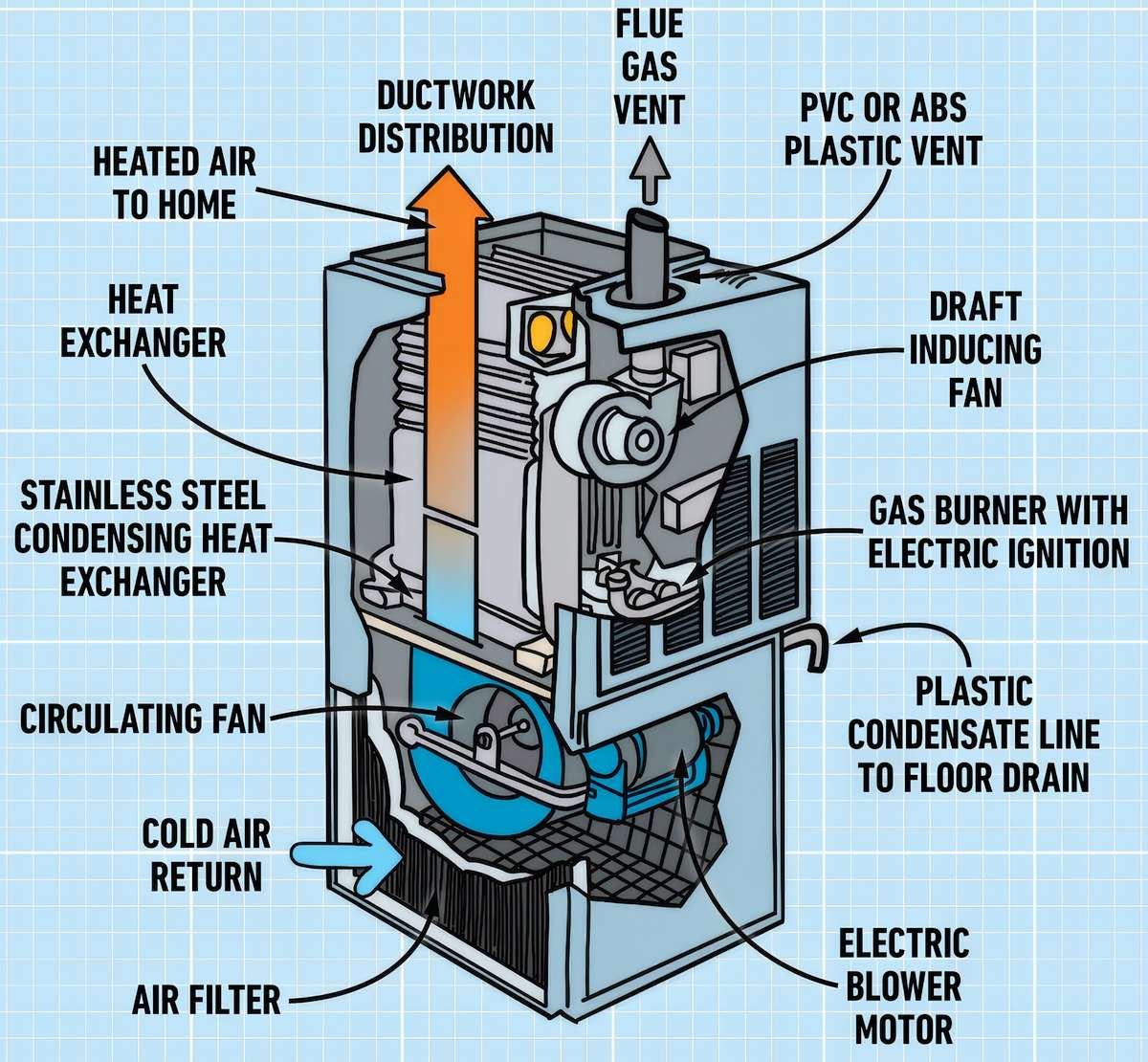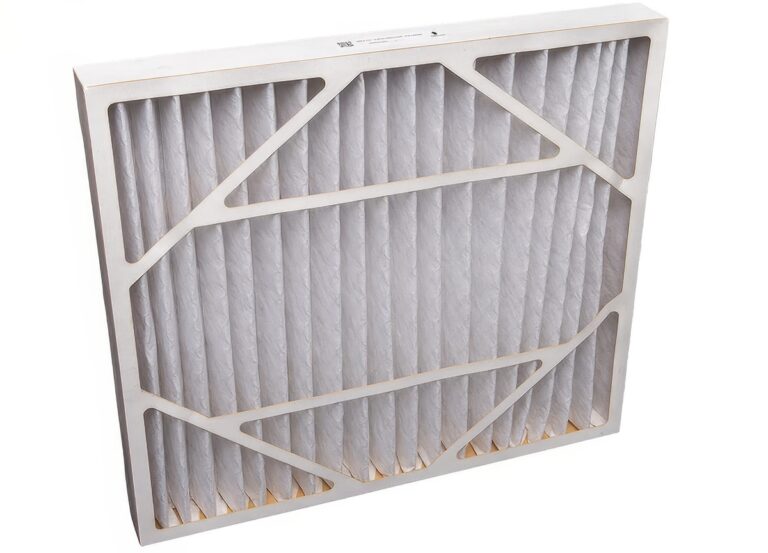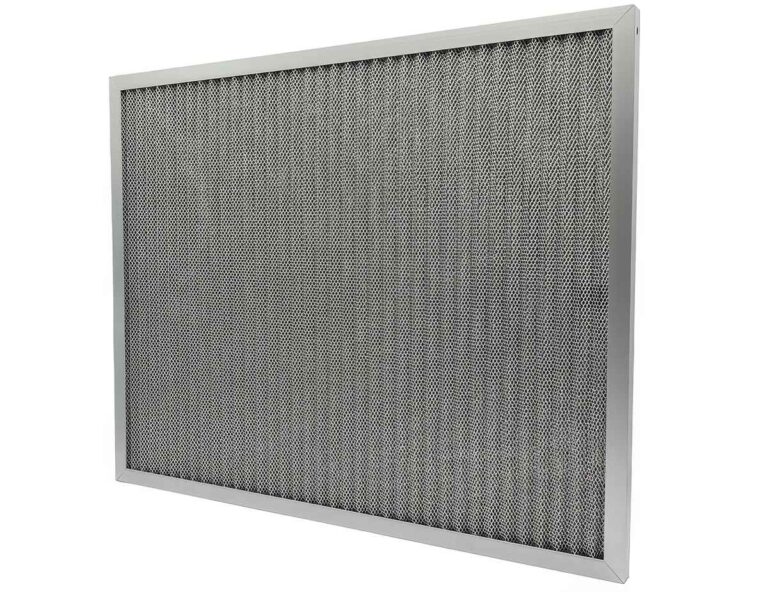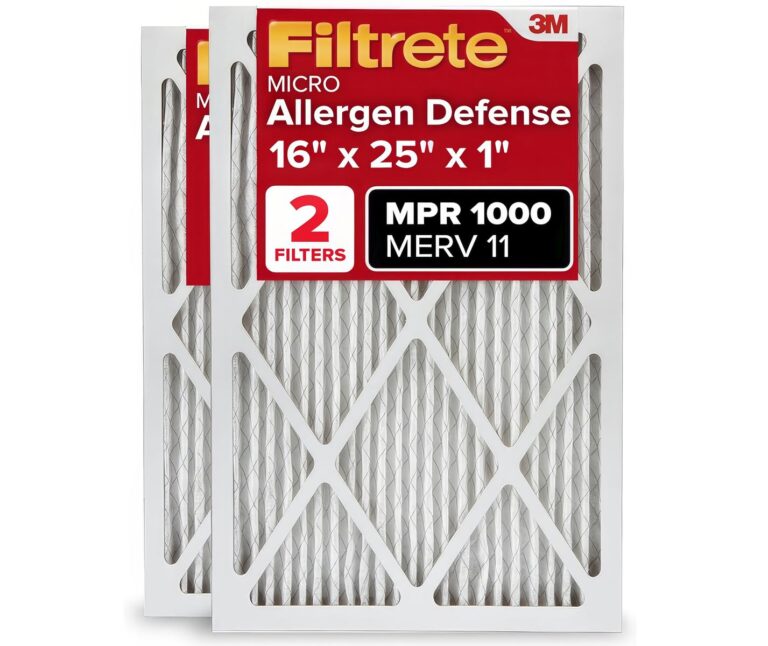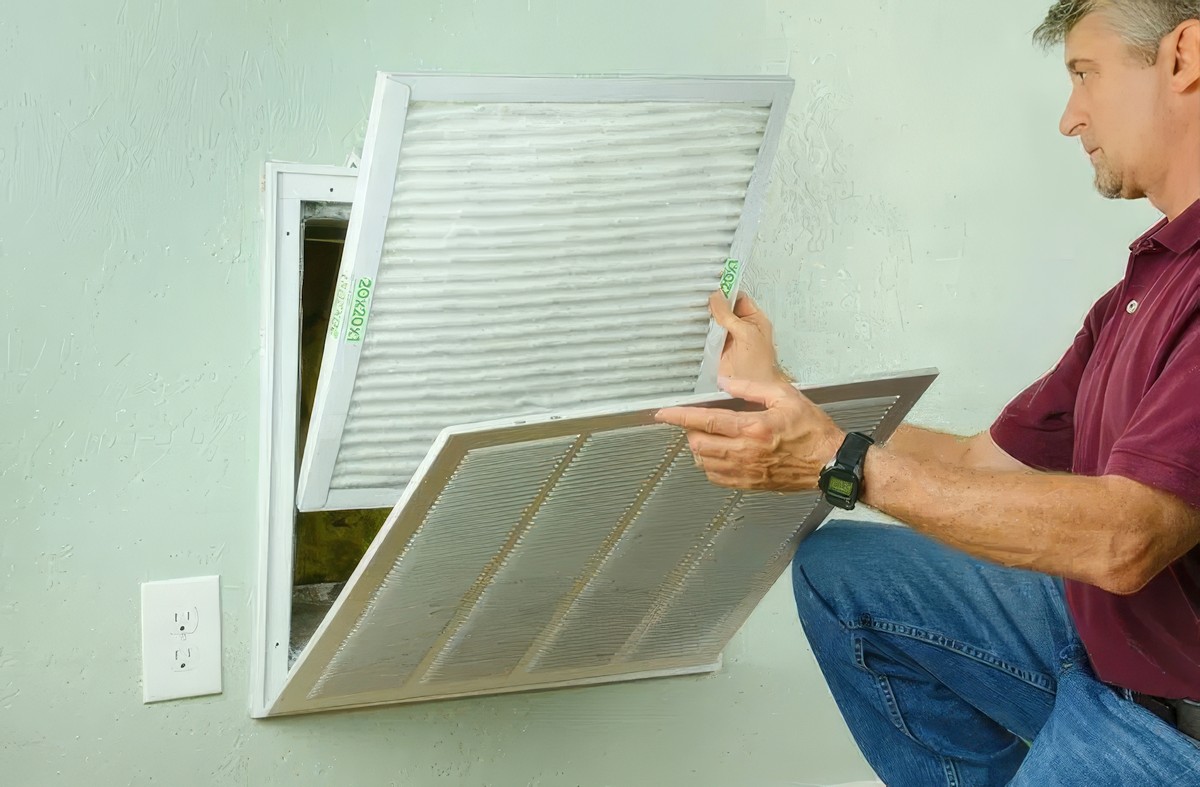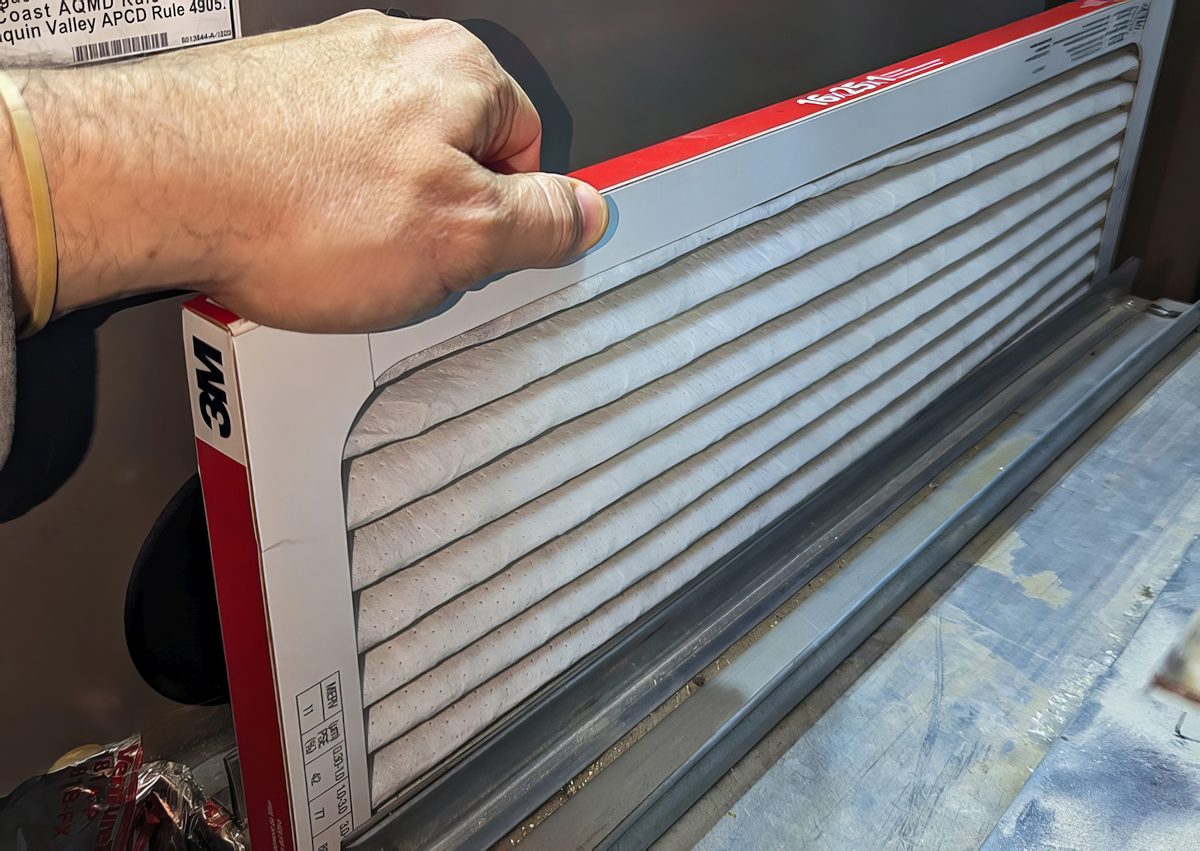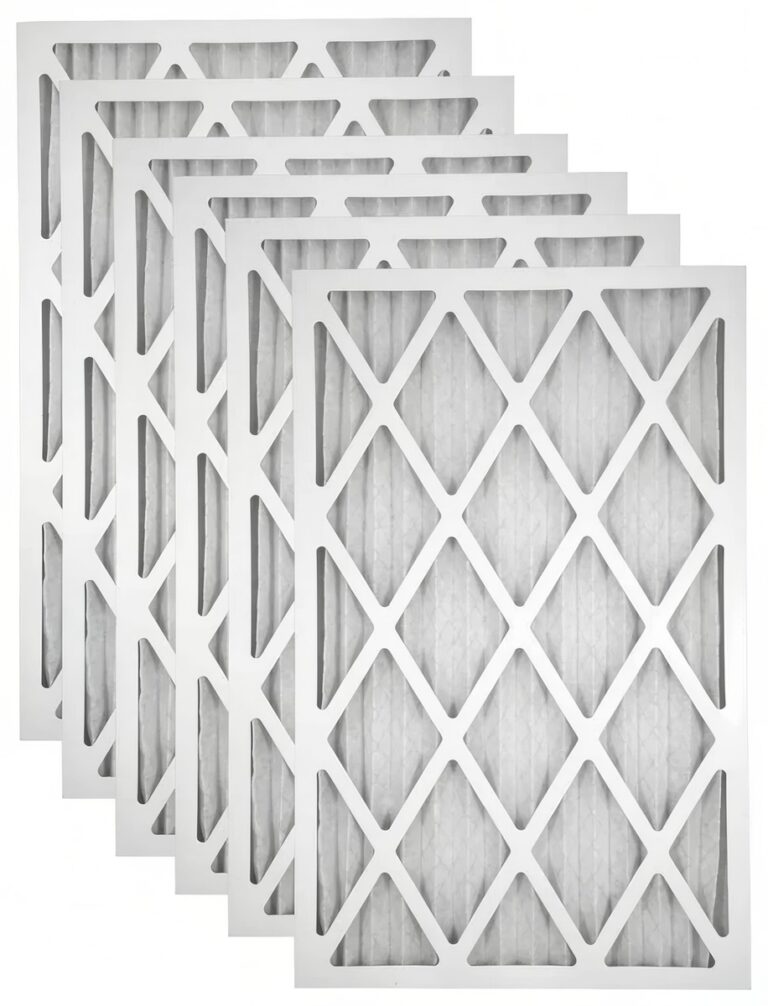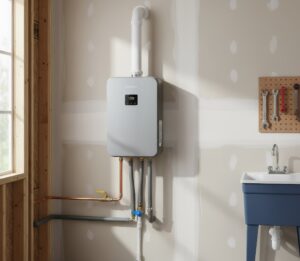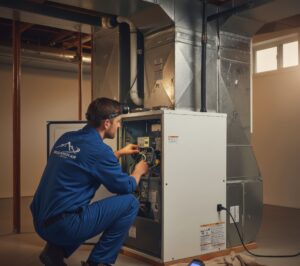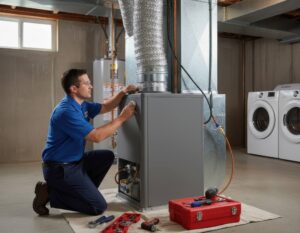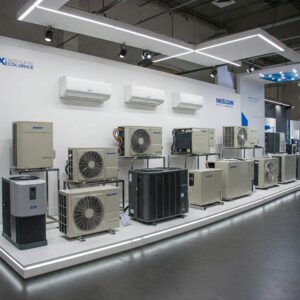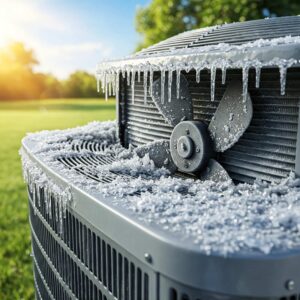A furnace filter does a dirty job—keeping the air in the HVAC system free of dust and other contaminants—but someone’s got to do it!
Forced-air gas furnaces, as used in most Calgary homes, depend on the unrestricted flow of air through the system for peak performance. Optimal comfort and health also require the air to be clean and free of harmful particles.
Indoor air quality matters and the HVAC filter helps ensure optimal air quality and furnace performance—but do all furnaces have filters?
And can you run a furnace without a filter?
Let’s find out…
Do All Furnaces Have Filters?
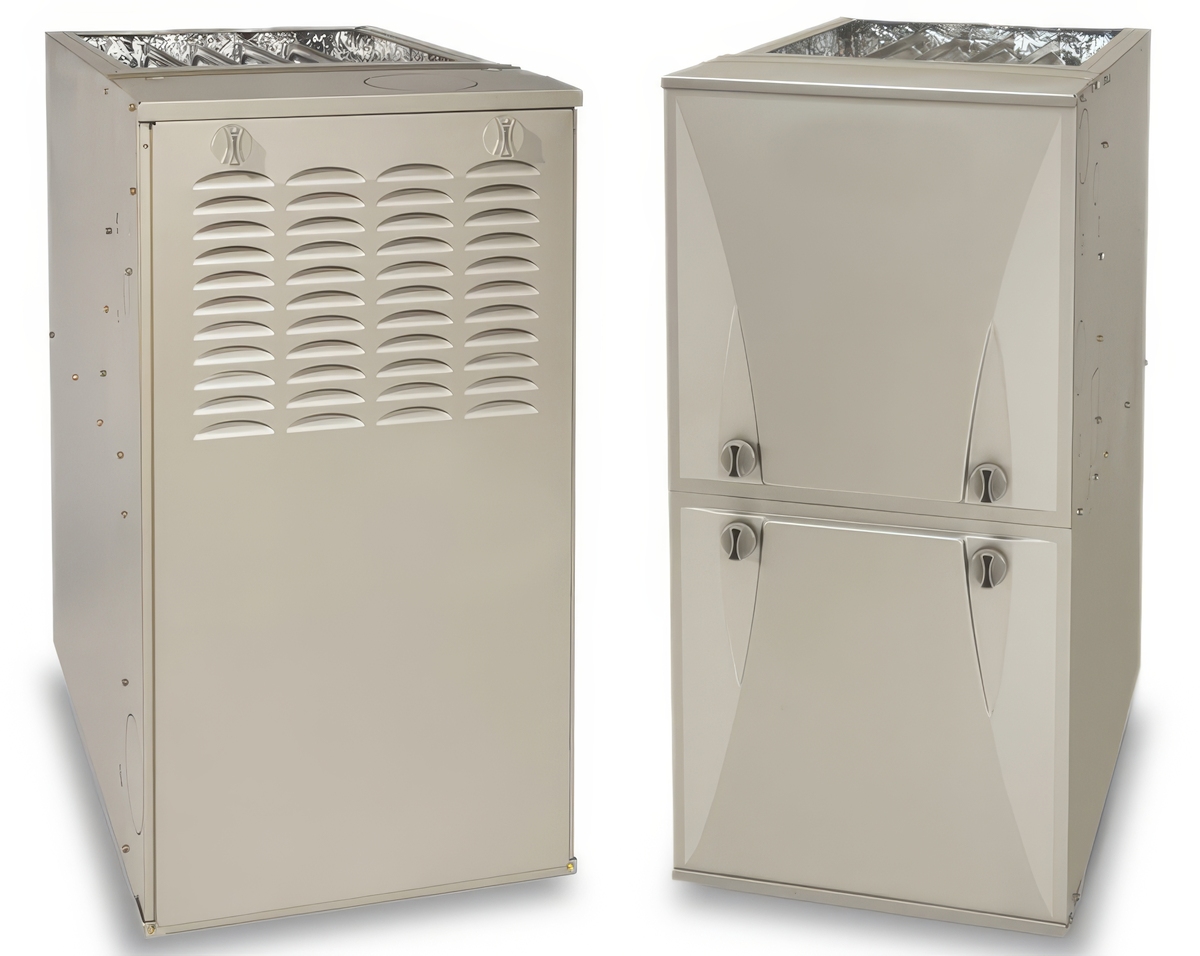
Almost all modern gas, electric, and oil furnaces have filters. Other heating systems like heat pumps also employ filters. Very old furnace types (wall or direct vent furnaces) that vent directly outside may not have a filter.
In modern systems, a clean filter plays an essential role, acting as a barrier between contaminated air entering the HVAC system and the heated air that circulates through it. Furnace filters are not universal, so you should familiarize yourself with the type used in your furnace. Regular filter replacements or cleaning will help the furnace maintain optimal heating performance as well as air quality.
MAKE THE RIGHT HEATING & COOLING DECISIONS…
For over two decades, Alberta Mountain Air has helped Calgarians solve heating and cooling problems and maintain ideal comfort levels. Get in touch online for a quote.
What Is a Furnace Filter and What Does It Do?
It surprises some homeowners how much dust, dirt, and debris is transported in the indoor air.
A furnace filter catches dust and other particles that enter the HVAC system through the return duct, potentially contaminating the air that circulates. Dirty, unfiltered air can cause allergic reactions and also contaminate components of the system, leading to problems with parts and expensive furnace repairs.
The furnace filter often separates the return duct from the blower fan, which circulates air through the ductwork in the home. Because your furnace requires free-flowing, unimpeded air, this physical barrier must be clean to be effective.
Regular cleaning or changing the furnace filter (depending on the type used by your furnace) will help prevent many types of furnace problems. In fact, a dirty air filter is one of the most common furnace troubleshooting issues we encounter.
In summary, the furnace filter performs three important functions in the HVAC system:
- Improves air quality
- Protects components
- Optimizes performance and efficiency

Types of Furnace Filters
It would be easier if furnace filters were universal and could be used in any HVAC system but different systems have different slot sizes for the filter. So, filters are available in several different sizes and you’ll need the right one for your HVAC system.
The main types are:
- Disposable filters, which must be replaced regularly.
- “Permanent” reusable filters, which are washable and may last up to five years if cleaned regularly.
Without regular cleaning or replacement, filters become clogged and airflow is restricted, reducing the heating and cooling efficiency of the HVAC system.
Filters are usually made from a blend of materials that can efficiently block dust particles, such as fiberglass, pleated paper or cloth, polyester, cotton, synthetic fibers, and carbon. Disposable pleated filters are the most popular kind.
Permanent reusable filters usually have a solid aluminum or plastic frame and are sturdier and more efficient than disposable filters.
Filters also vary in size and efficiency…
Filter Size
The height, length, and thickness of furnace filters vary. The most common filter thickness in Calgary homes is one inch or four or five inches. The length and height of the filter may be any of the following (amongst other dimensions):
- 10×10 inches
- 10×20 inches
- 14×25 inches
- 16×20 inches
- 16×25 inches
- 20×25 inches
- 25×25 inches
- 18×30 inches
- 30×20 inches
Filter Efficiency
Filters are usually rated by their ability to trap particles. The Minimum Efficiency Reporting Value (MERV) rating ranges from 1 to 16, with a rating of 8 to 11 recommended for comfort and efficiency in most homes. Higher MERV ratings will trap more allergens as well as dust.
The Filter Performance Rating (FPR) measures a filter’s performance based on factors like airflow, efficiency, and dust-holding capacity.
Electrostatic Filters
Electrostatic filters self-charge themselves as air passes through them, trapping small particles. They are useful, especially for homes with pets or people who smoke indoors. Both disposable and reusable filters generally have electrostatic varieties.
How to Choose the Right Furnace Filter
To find the right size and type of replacement filter for your system, check your owner’s manual or locate your existing filter by following the directions below.
How Can I Locate and Change My Furnace Filter?
Furnace filters in HVAC systems in Calgary are often located between the furnace and the return air duct:
- The filter may be behind the return vent door, which is often located in a ceiling or wall.
- The filter may be in a ceiling vent if the HVAC system is in the attic.
Sometimes, you might find the filter in the furnace blower compartment of the furnace itself—but with Lennox furnaces, this is much rarer.
- In a vertical furnace with air moving upwards: the filter is often in the bottom door.
- In a vertical furnace with air moving downwards: the filter is often in the top door.
- In a horizontal furnace: the filter is often in a rack on the intake side.
The precise location depends on the type of furnace installation in your home.
Turn your system off and check the common locations outlined above. If you can locate the filter, slide it out from the slot and look for the size labelled on the filter’s frame. This will tell you the size filter you should buy. Then, decide on the MERV rating you want and purchase a replacement or a set of replacements online or at a local hardware store.
Simply slide the new filter into its slot, making sure that the arrows point toward the furnace. Once it’s firmly in place, you’re ready to go. Switch the furnace back on!
Can I Run My Furnace Without a Filter?
A furnace will run without a filter but doing so is inadvisable—especially for any length of time.
Without a filter, your furnace will not filter out dust and other particles from the air circulating in your house. You and your family will be breathing poor quality air and, long-term it will clog up your system, potentially damage components like coils and blower fan, and increase heating bills from the system having to work harder.
The cost of a furnace is already high enough in Calgary without having to replace it before the end of its natural life.
So, if you need to replace a dirty filter—and find a new one—make sure the replacement is fitted ASAP. Running a few hours or overnight without a filter probably won’t make much difference but don’t leave it any longer.
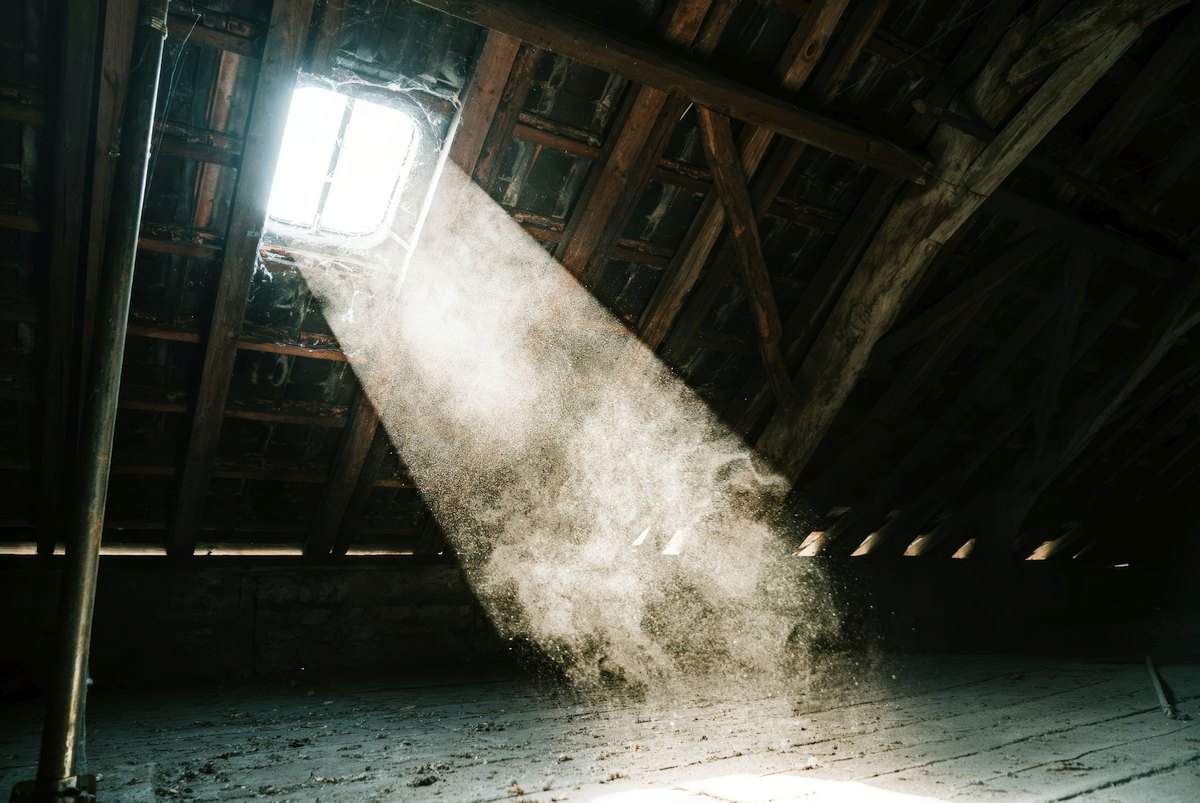
FAQs
Yes, heat pumps need filters to maintain performance and air quality. To prolong the life of your heat pump and prevent the need for repairs, change the heat pump filter regularly, especially if it is the primary heating and cooling component of your HVAC system.
If you have a central heating and air conditioning system (HVAC) with a furnace and/or heat pump and an air conditioner, one filter looks after everything. However, if separate heating and cooling systems run in your home, your furnace and air conditioner may require different filters to protect each system and maintain air quality.
You should change your furnace filter every 1-3 months, depending on the time of year (more often in winter), the type of filter you use (some are reusable), whether you have pets or building work near you, and whether anyone has allergies or a respiratory condition in your home. Generally, the poorer the air quality, the quicker the filters will become clogged and the more often they need replacing or cleaning. Find out more about changing a furnace filter here.
Reusable air filters cost more than disposable filters but can be washed or vacuumed. To find out if your furnace uses a reusable filter, locate the filter and check its markings or labels. Most reusable filters will clearly state this feature on the product but consult the user manual or contact the manufacturer if you’re unsure.
Keep Your Furnace in Peak Condition…
To maintain comfort in the home and peace of mind that you and your family are breathing healthy air, book a professional furnace clean and tune-up at least once a year. This will include a filter clean or replacement if necessary—though most homeowners can easily clean or replace filters every two or three months as a DIY job.
Regular furnace maintenance ensures that all components are working in harmony, with good air circulation and efficient heating of your home—prolonging the life of your system and preventing the need for emergency furnace repairs.
All HVAC professionals at Alberta Mountain Air are SAIT-certified and can help you make the right heating and cooling decisions. So, if you’re in Calgary and considering your heating options, contact us online.
